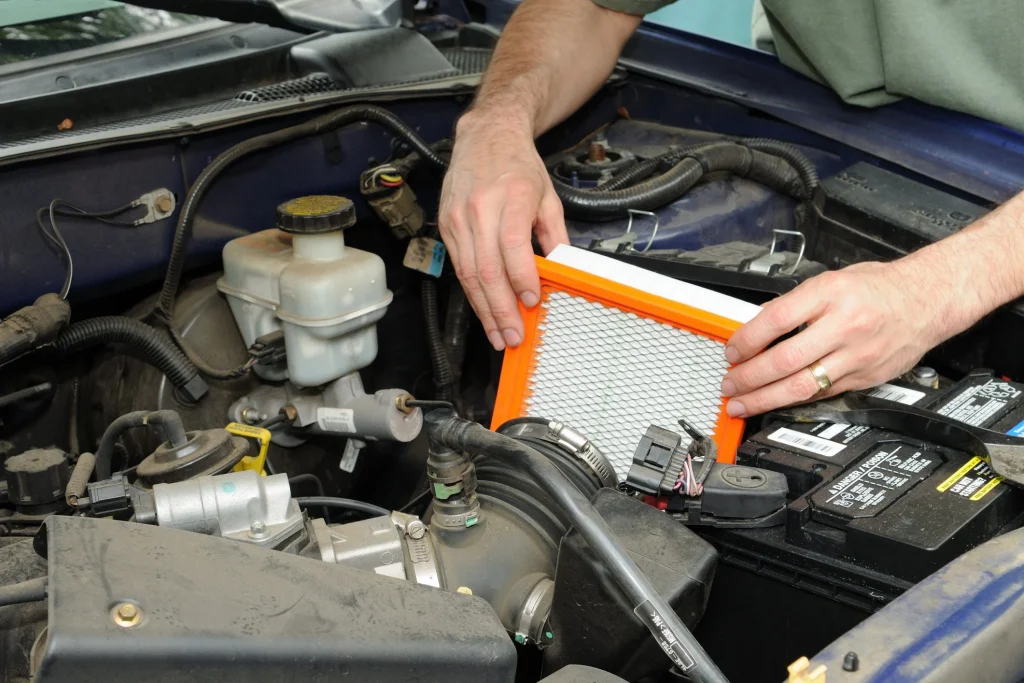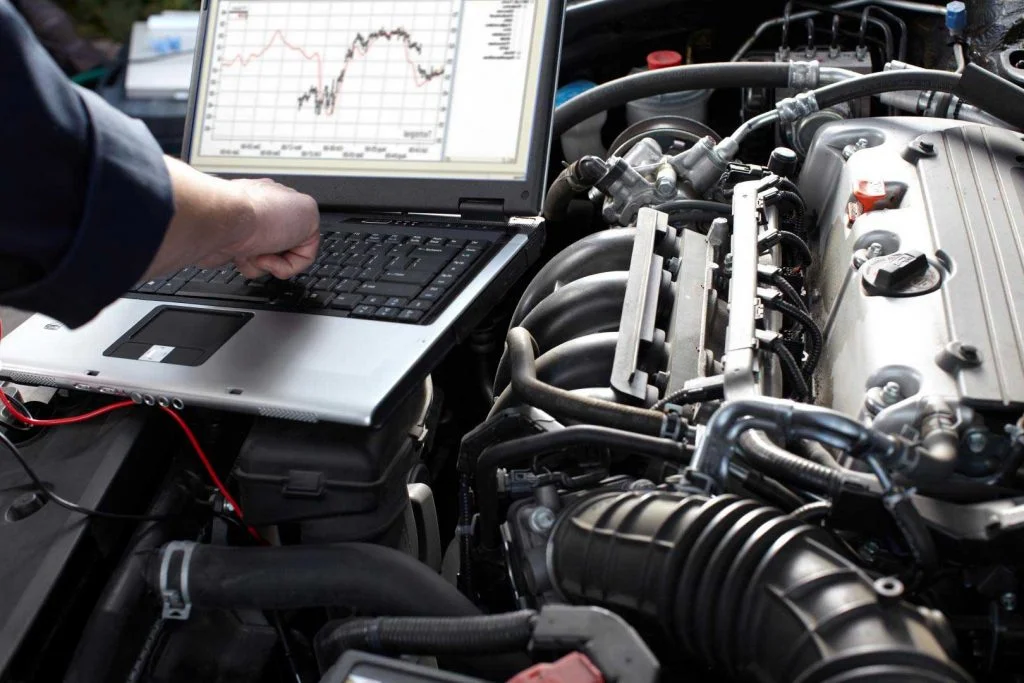Owning a car can be a rewarding experience, but it comes with its own set of responsibilities. One of the most important aspects of car ownership is ensuring your vehicle is in good condition. While professional mechanics can help fix major issues, many common car problems can be diagnosed and repaired at home with some basic tools and know-how. In this guide, we will explore how to inspect and fix common car issues yourself, saving time and money while keeping your car running smoothly.
1. Check Your Car’s Engine Oil
Engine oil is vital for lubricating the moving parts of your engine and preventing wear and tear. Over time, oil can become dirty or low, causing the engine to overheat or seize.

How to Inspect and Fix:
- Step 1: Park your car on a flat surface and turn off the engine. Wait for a few minutes to let the oil settle.
- Step 2: Pull out the dipstick, wipe it clean with a rag, and insert it back into the tube.
- Step 3: Pull it out again and check the oil level. If it’s low, add the recommended oil type.
- Step 4: Inspect the oil’s color and texture. If it’s dark and gritty, it’s time to change the oil.
2. Inspect Tire Pressure and Condition
Proper tire maintenance is crucial for safety and fuel efficiency. Under-inflated or damaged tires can result in poor handling, reduced fuel economy, and even tire blowouts.
How to Inspect and Fix:
- Step 1: Use a tire pressure gauge to check the pressure. Refer to the car’s manual for the recommended PSI (pounds per square inch).
- Step 2: If the pressure is low, inflate the tires using an air compressor. Over-inflation can cause wear in the center of the tire, while under-inflation leads to excessive wear on the edges.
- Step 3: Check for any visible damage, such as punctures, cracks, or worn-out treads. If the tread depth is below 2/32 of an inch, it’s time to replace the tire.
3. Replace Worn-Out Brake Pads
Brakes are essential for the safety of your vehicle. Worn-out brake pads can lead to poor braking performance, longer stopping distances, and even damage to your rotors.
How to Inspect and Fix:
- Step 1: Remove the wheel and inspect the brake pads. If the thickness is less than a quarter of an inch, it’s time for a replacement.
- Step 2: To replace the brake pads, remove the caliper bolts, slide the caliper off, and replace the pads.
- Step 3: Reassemble the components and check the brake fluid level. Top it off if necessary.
4. Fix a Dead Car Battery
A dead battery is one of the most common car problems. While a dead battery is often caused by leaving the lights on, it could also be a sign of an aging or faulty battery.
How to Inspect and Fix:
- Step 1: Open the hood and check the battery terminals for any signs of corrosion. Clean them with a mixture of baking soda and water if needed.
- Step 2: Use a multimeter to check the battery’s voltage. A healthy battery should have a reading between 12.6V and 12.8V.
- Step 3: If the battery is dead, jump-start your car using jumper cables and a working vehicle.
- Step 4: If jump-starting works, it’s likely the battery needs replacement. If the car doesn’t start after a jump, the problem may be related to the alternator or another issue.
5. Fixing an Overheating Engine
An overheating engine can lead to severe damage, so it’s important to address the issue as soon as it arises. Causes can range from low coolant levels to a malfunctioning radiator.
How to Inspect and Fix:
- Step 1: Check the coolant levels by inspecting the coolant reservoir. If the level is low, top it off with a mixture of antifreeze and water.
- Step 2: Inspect the radiator and hoses for leaks or damage.
- Step 3: If the engine continues to overheat, check the thermostat and radiator fan. A malfunctioning thermostat may need replacement, and a damaged fan could require repair or replacement.
6. Examine the Air Filter
A clogged air filter can reduce engine efficiency, leading to poor performance and lower fuel economy. It’s essential to replace or clean your air filter regularly.

How to Inspect and Fix:
- Step 1: Locate the air filter box, which is typically near the engine.
- Step 2: Remove the filter and inspect it. If it’s dirty or clogged, it’s time for a replacement.
- Step 3: If you’re using a reusable filter, clean it with compressed air and re-install it. Otherwise, replace the filter with a new one.
7. Fixing a Malfunctioning Headlight or Taillight
A burnt-out headlight or taillight can reduce visibility and make your car less safe to drive, especially at night. Fortunately, replacing lights is relatively easy and inexpensive.
How to Inspect and Fix:
- Step 1: Turn on your headlights and check if they are working. If not, check the bulb.
- Step 2: Open the hood and access the back of the headlight or taillight assembly.
- Step 3: Remove the broken bulb and replace it with a new one.
- Step 4: Ensure the new bulb is working properly before closing the assembly.
8. Fix a Sticking or Squeaky Door Lock
Over time, car door locks may become stiff or start squeaking, making it harder to open and close the doors.
How to Inspect and Fix:
- Step 1: Lubricate the door lock mechanism with a silicone-based lubricant.
- Step 2: Apply the lubricant to the keyhole and the moving parts of the lock. Open and close the door several times to work the lubricant in.
9. Repairing Minor Paint Scratches
Small scratches in your car’s paintwork can be a nuisance, but they don’t necessarily require professional help. Fixing them at home can save you money and restore your vehicle’s appearance.
How to Inspect and Fix:
- Step 1: Clean the area around the scratch with soap and water.
- Step 2: Apply a rubbing compound to remove any dirt or oxidation from the surface.
- Step 3: Use touch-up paint to fill in the scratch. Apply it carefully and let it dry before buffing the area to blend it with the rest of the paint.
10. Dealing with Unpleasant Odors in the Car
Unpleasant odors inside the car can be caused by a variety of factors, including mold, mildew, or food spills. Regular cleaning and maintenance can help keep your car smelling fresh.
How to Inspect and Fix:
- Step 1: Clean the interior thoroughly, focusing on the carpets and upholstery.
- Step 2: Use an air freshener or odor eliminator to neutralize the smell.
- Step 3: If the smell persists, consider replacing the cabin air filter or using a professional-grade cleaning solution.
Conclusion
Regularly inspecting and fixing common car issues at home is a great way to save money and ensure your vehicle runs smoothly. By addressing these simple problems early, you can avoid costly repairs down the road and extend the lifespan of your car. With the right tools and a little know-how, many car issues can be handled at home, making car maintenance both accessible and cost-effective. Keep an eye on the most common problems, and your car will continue to perform at its best for years to come.

Leave a Reply